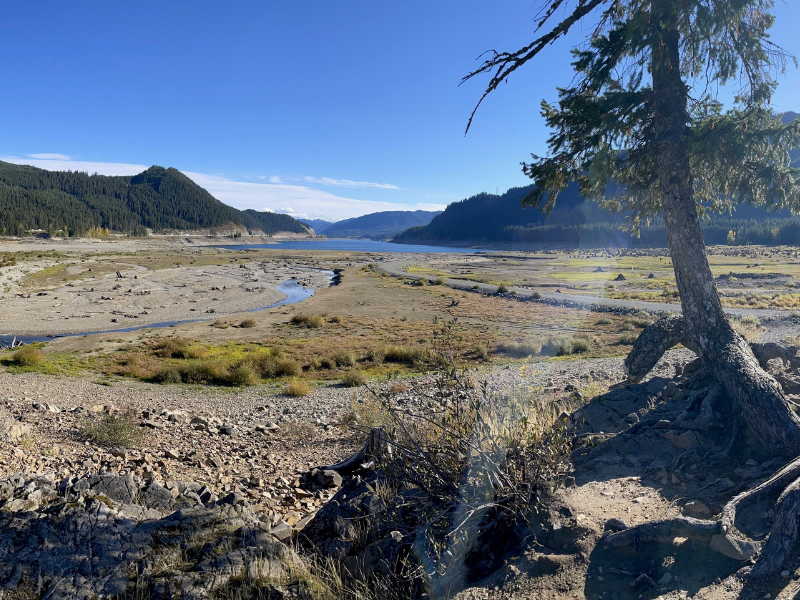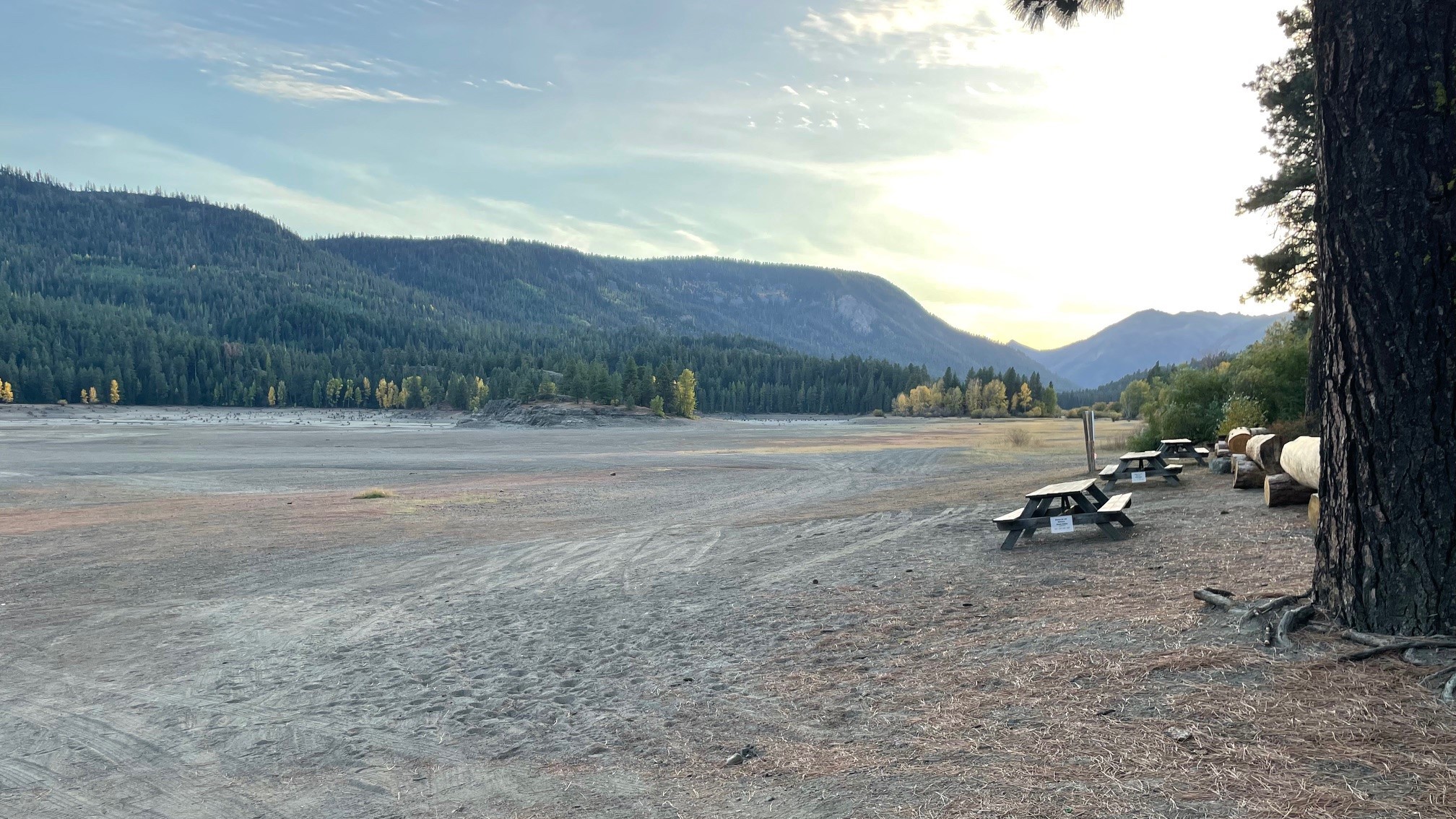
Low reservoir levels at Keechelus Lake in October 2024.
As we turn the corner on winter, we look ahead to warmer days and longer daylight hours. But as much as we cherish that springtime feeling, many in the Yakima Basin are hoping for cold precipitation in the weeks ahead. Cold temperatures are key to building the snowpack that is critical for the basin’s water supply.
Yakima Basin drought
The Yakima Basin had back-to-back droughts in 2023 and 2024. Heading into irrigation season, we are starting to get a better idea of what conditions may look like for the rest of the year and how it will impact the basin. We're likely facing a third consecutive year of drought, which hasn’t happened since 1992-94.
As of March 6, 2025, the five basin reservoirs had only 38% of what’s typical at this time of year. That’s the third lowest since 1971. The basin will need far above average snowpack to recover, which is unlikely with a rapidly closing window for big storms to provide water. While the remainder of March and April are expected to be cooler and wetter than average, it probably won't be enough to make up the difference.
Challenges to water supply
When water supply is diminished, state law requires that water users with the oldest rights receive all their water before other users can receive theirs. In the Yakima Basin, junior users are curtailed during drought. This includes anyone diverting from rivers and creeks with a water right priority date after May 10, 1905. Curtailments help maintain enough water in rivers for fish and protect senior water rights from being impaired.
Pro-ratable water users in the Yakima Basin — those with a May 10, 1905, water right priority date — are expected to receive 48 percent of their normal water supply this year, according to the U.S. Bureau of Reclamation’s (USBR) March water supply forecast.
In some cases, surface water users can pump emergency drought wells as an alternate or additional source during drought. This use must be authorized by Ecology.
If you’re considering using an emergency drought well or need to apply for an emergency drought transfer, plan ahead and let us know now. We can help you identify if options are available if you can’t get your usual water supply. Call us at 509-575-2597.
Low reservoir levels seen at Silver Beach Resort at Rimrock Lake in October 2024.
How we got here
Over the last two years, less precipitation and warmer-than-average temperatures have resulted in below-normal snowpack. There just wasn’t enough water in the mountains and reservoirs to meet needs across Washington. That led us to declare a drought emergency for most of the state in April 2024, set to expire in April 2025.
If conditions indicate, we may extend or issue a new drought declaration for the Yakima Basin and potentially other areas in the state.
“We are concerned about the low water supply estimated by USBR and its impact on pro-ratable water users,” shared Caroline Mellor, Ecology’s statewide drought lead. “We are watching conditions closely over the next few weeks to inform the state’s drought declaration process.”
The lack of snow from these back-to-back droughts is a pattern we’ll see with increasing frequency moving forward. Despite the challenges such low water supply brings, it shows us why it’s so important to responsibly manage water for fish, agriculture, and communities in the basin.
What’s next
While future water supply forecasts are uncertain, we are closely monitoring the situation and recognize that it may be a tough water year for the basin. The best thing we can all do is stay mindful of our water usage. Now and in the coming months, from landscaping with native plants to using efficient irrigation devices, your actions can make a difference.


